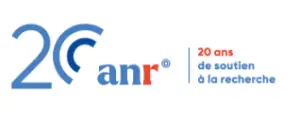Scientific Committee
Comité scientifique
Mina Aganagic (Berkeley University)
Tomoyuki Arakawa (Kyoto University)
Antoine Bourget (CNRS, CEA)
Thomas Creutzig (University of Alberta)
Organizing Commitee
Comité d’organisation
David Hernandez (Université Paris Cité)
Peng Shan (Tsinghua University)
Michela Varagnolo (CY Cergy Paris Université)
Éric Vasserot (Université Paris Cité)

IMPORTANT WARNING: Scam / Phishing / SMiShing ! Note that ill-intentioned people may be trying to contact some of participants by email or phone to get money and personal details, by pretending to be part of the staff of our conference center (CIRM). CIRM and the organizers will NEVER contact you by phone on this issue and will NEVER ask you to pay for accommodation/ board / possible registration fee in advance. Any due payment will be taken onsite at CIRM during your stay.
In physics, the Coulomb branch is one of the two branches of the moduli space of vacua of supersymmetric gauge theories. The other branch is the Higgs branch. The Higgs branch is closely related to Hamiltonian reductions, and, in particular, to the Nakajima quiver varieties. Recently, Braverman-Finkelberg-Nakajima have given a mathematical model for the Coulomb branch of 3D N=4 gauge theories. It is an affine singular variety equal to the spectrum of the cohomology ring of an ind-scheme modeled over affine Grassmannians. The Coulomb branch admits a quantum deformation which is closely related to truncated shifted affine quantum groups and Yangians.
A result of Brundan-Kleshchev compares truncated shifted Yangians and finite Walgebras of type A. This implies that all finite dimensional W-algebras of type A can be realized as Coulomb branches of type A quivers. The W-algebras come in several flavors. Affine W-algebras are vertex operator algebras that extend the Virasoro algebra. They were introduced by Zamolodchikov in conformal field theories, and were further developed by many authors, notably Feigin-Frenkel, Kac-Roan-Wakimoto, and Frenkel-Reshetikhin for the deformed version. They are significant for the representation theory of affine Lie algebras or affine quantum groups. New constructions of affine W-algebras in quantum field theories have garnered the attention of mathematicians recently, among which the Beem-Lemos-Liendo-Peelaers-Rastelli-VanRees correspondence which associates a VOA to a 4D N=2 SCFT, and the Alday-Gaiotto-Tachikawa correspondence, which relates 2D CFT and N=2 supersymmetric Yang-Mills theory in four dimensions.
The goal of this conference is to address several problems about Coulomb branches, affine quantum groups and W-algebras by combining the expertise of researchers in representation theory, algebraic geometry, and mathematical physics.
En physique, la branche de Coulomb est l’une des deux branches de l’espace de modules des états des théories de jauge supersymétriques. L’autre branche est la branche de Higgs. La branche de Higgs est étroitement liée aux réductions hamiltoniennes et, en particulier, aux variétés de carquois de Nakajima. Récemment, Braverman-Finkelberg-Nakajima ont proposé un modèle mathématique pour la branche de Coulomb des théories de jauge 3D, N=4. Il s’agit d’une variété affine singulière égale au spectre de l’anneau de cohomologie d’un ind-schéma relié aux grassmanniennes affines. La branche de Coulomb admet une déformation quantique qui est étroitement liée aux groupes quantiques affines tronqués et aux Yangiens.
Un résultat de Brundan-Kleshchev compare les Yangiens tronqués et les W-algèbres finies de type A. Cela implique que toutes les W algèbres de dimension finie de type A peuvent être réalisées comme des branches de Coulomb de carquois de type A. Les W-algèbres existent sous plusieurs formes. Les W-algèbres affines sont des algèbres d’opérateurs vertex qui étendent l’algèbre de Virasoro. Elles ont été introduites par Zamolodchikov en théorie conforme des champs, et ont été développées par de nombreux auteurs, notamment Feigin-Frenkel, Kac-Roan-Wakimoto, et Frenkel-Reshetikhin pour la version déformée. Elles sont importantes pour la théorie des représentations des algèbres de Lie affines ou des groupes quantiques affines. De nouvelles constructions de W-algèbres affines dans les théories quantiques des champs ont récemment attiré l’attention des mathématiciens, parmi lesquelles la correspondance de Beem-Lemos-LiendoPeelaers-Rastelli VanRees, qui associe une VOA à une SCFT en 4D, N=2, et la correspondance d’Alday-Gaiotto-Tachikawa, qui relie les CFT en 2D et les théories de Yang-Mills supersymétriques en 4D, N=2.
L’objectif de cette conférence est de traiter plusieurs problèmes concernant les branches de Coulomb, les groupes quantiques affines et les W-algèbres en combinant l’expertise des chercheurs en théorie des représentations, en géométrie algébrique et en physique mathématique.
SPEAKERS
Mina Aganagić (University of California Berkeley)
Tomoyuki Arakawa (Kyoto University)
Sabin Cautis (The University of British Columbia)
Tudor Dimofte (University of Edinburgh)
Justine Fasquel (CNRS, Université Bourgogne Europe)
Michael Finkelberg (The Hebrew University of Jerusalem)
Iva Halacheva (Northeastern University)
Joel Kamnitzer (McGill University)
Bernard Leclerc (Université de Caen)
Andrew Linshaw (University of Denver)
Andrei Negut (EPFL) TBC
Andrei Okounkov (ColumbiaUniversity) TBC
Alexander Shapiro (University of Edinburgh)
Sasha Tsymbaliuk (Purdue University) TBC
Alex Weekes (Université de Sherbrooke)
Huafeng Zhang (University de Lille)
SPONSORS



